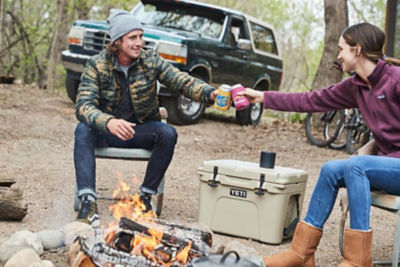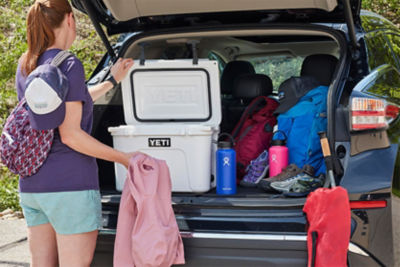Choosing the Right Bike for Your Kids
Training wheels have historically been a rite of passage for children learning how to ride a bike. But now, some parents are turning to balance bikes to teach their tots.

Wheels or no wheels? That’s the question many parents are asking themselves when it comes to choosing the right bike for their kids.
While the long-established option of training wheels – where a two-wheel attachment is added to the rear wheel of a classic bike to provide stability – is still available, two-wheel bikes without pedals or drivetrains called balance bikes have been making waves on the market.
If you’re the parent of a soon-to-be rider, you may be wondering which option best suits their needs. This guide can help you break down the ins and outs of choosing the right bike for your kids.
SIZE UP
When it comes to choosing a bike, sizing is crucial for your child’s comfort and ability to use it.
The way sizing is determined is different for a bike with training wheels compared to a balance bike.
TRAINING WHEELS
You can attach training wheels to a traditional two-wheel bike. When buying a bike for a child, the size is based on the wheel measurement. Younger children typically use 12-inch or 16-inch training wheel bikes, but it may vary based on your child’s height and age when first learning to ride. Check out our Pro Tips guide for more information on kids’ bike sizing.
BALANCE BIKE
With a balance bike, the most important factor is the seat height. Children ride balance bikes by sitting on the seat and pushing off the ground with their feet. They should be able to use their legs to propel the bike forward. Therefore, the seat height should be about 1-1½ inches shorter than your child’s inseam. You can find their inseam by using a measuring tape to determine the distance between their groin and the bottom of their ankle. Balance bikes also come with a variety of wheel sizes, ranging from 10- to 16-inch tires.
BIKE BENEFITS
Both the use of training wheels and balance bikes have their benefits, as each has a different focus on what they teach.
TRAINING WHEELS
The main purpose for using training wheels is to help teach your child how to pedal without the fear of falling over. Pedaling can be an unnatural motion, so learning while stabilized can help bolster a child’s confidence.
Another benefit to using training wheels is that they can easily be removed. This way, when your child is ready to move on to their first “big kid” bike, it’s as simple as finding a screwdriver, and it can save you money for another purchase.
Finally, the preference of the parents matters, too. Some parents may feel more comfortable using training wheels to teach their child how to ride because it’s what they grew up with and are familiar with. This can make it easier to explain to your child what to expect when they begin riding.
BALANCE BIKES
Just as the name suggests, balance bikes are used to teach children how to balance. Many believe that balancing is the hardest part of learning to ride a bike. With balance bikes, children go from walking and running while sitting on the saddle to gliding with their feet off the ground. Once they can properly maneuver with their feet off the ground, they should be able to balance on a regular bike as well.
Balance bikes also tend to be more lightweight than bikes with training wheels, which makes them easier to maneuver for small children (not to mention easier for the parents if they end up having to carry the bike home). Because balance bikes come in smaller sizes, they also enable you to get your child learning faster. Toddlers as young as two years old can ride balance bikes.
THINGS TO CONSIDER
While both training wheels and balance bikes have their benefits, they each have potential drawbacks for parents to consider.
TRAINING WHEELS
The biggest detriment to using training wheels is that they don’t help your child learn to balance. This can cause a bit of a shock to a child and lead to some difficulty when the wheels are removed for the first time. Along those same lines, while with a balance bike it’s clear when it’s time to move to the next level, it can be hard to know when it’s time for the training wheels to come off.
BALANCE BIKES
Since balancing is a harder skill to learn than pedaling, there may be a bigger learning curve while using balance bikes. Children will also have to wait to learn how to pedal. In addition, if you have an older child who has never learned to ride, a balance bike may not even be an option. Also be sure to remember that you’ll have to buy a traditional bike once your child is ready to move on.
Choosing the right way to train your child to ride a bike can be a balancing act in itself. Both balance bikes and training wheels have their benefits and drawbacks, but now that you can pinpoint the particulars, you can get the wheels in motion for your child to learn to ride.








